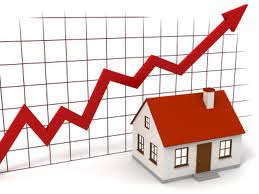 (WSJ) -- Home prices through July posted their largest year-to-date rise since 2005, according to theS&P/Case-Shiller indexcovering 20 major metropolitan areas. Prices rose by 5.9% from the end of last year, according to the index, compared with a 0.4% gain for the same period last year and a 2.1% gain in 2010, when tax credits fueled a burst of home sales activity. Are price gains limited to one segment of the market—say, foreclosed properties? Not really. Data from real-estate firm CoreLogic show that the increases are being felt across all segments of the market. Overall median home prices in August were up by 12% from one year ago, as are median prices of existing homes that aren’t distressed sales. Median prices of bank-owned foreclosures were up by 3%, while median prices were flat on short sales, where banks approve the sale of a house for less than the mortgage-debt that’s owed. Median prices of new homes, meanwhile, are up by 6%. There are still a lot of foreclosures. How could prices be rising? While foreclosures are still high by historic standards, the share of bank-owned foreclosures that are selling is down sharply over the past few years. Listings of foreclosed properties are down by 24% from one year ago and by more than 45% from two years ago. While sales of foreclosed properties, which typically sell at a discount, have fallen by about 20% from one year ago, sales of traditional homes are up by 16% from one year ago, according to Ivy Zelman, chief executive at research firm Zelman & Associates. Prices, then, are rising not only because supplies of homes for sale are down, but demand is up. Are banks strategically holding properties off of the market? There’s little evidence that banks have seen an increase of marketable, or ready-for-sale, foreclosed properties sitting on their books. It’s true that there are still millions of properties that are in the foreclosure process or where borrowers have missed a couple of mortgage payments, and it’s unclear when or how aggressively banks will move those properties through the foreclosure process. In many cases, lenders and other mortgage companies that handle foreclosures have struggled to meet certain state requirements governing foreclosures. But the actual volumes of foreclosed properties that are sitting on banks books are down by around 24% from one year ago. How large is the shadow inventory? Overall, the “shadow inventory” of potential foreclosures is down by around 500,000 from the beginning of the year. Zelman & Associates put its estimate of shadow inventory that exceeds the typical level at around 2.9 million properties. Read more from WSJ
(WSJ) -- Home prices through July posted their largest year-to-date rise since 2005, according to theS&P/Case-Shiller indexcovering 20 major metropolitan areas. Prices rose by 5.9% from the end of last year, according to the index, compared with a 0.4% gain for the same period last year and a 2.1% gain in 2010, when tax credits fueled a burst of home sales activity. Are price gains limited to one segment of the market—say, foreclosed properties? Not really. Data from real-estate firm CoreLogic show that the increases are being felt across all segments of the market. Overall median home prices in August were up by 12% from one year ago, as are median prices of existing homes that aren’t distressed sales. Median prices of bank-owned foreclosures were up by 3%, while median prices were flat on short sales, where banks approve the sale of a house for less than the mortgage-debt that’s owed. Median prices of new homes, meanwhile, are up by 6%. There are still a lot of foreclosures. How could prices be rising? While foreclosures are still high by historic standards, the share of bank-owned foreclosures that are selling is down sharply over the past few years. Listings of foreclosed properties are down by 24% from one year ago and by more than 45% from two years ago. While sales of foreclosed properties, which typically sell at a discount, have fallen by about 20% from one year ago, sales of traditional homes are up by 16% from one year ago, according to Ivy Zelman, chief executive at research firm Zelman & Associates. Prices, then, are rising not only because supplies of homes for sale are down, but demand is up. Are banks strategically holding properties off of the market? There’s little evidence that banks have seen an increase of marketable, or ready-for-sale, foreclosed properties sitting on their books. It’s true that there are still millions of properties that are in the foreclosure process or where borrowers have missed a couple of mortgage payments, and it’s unclear when or how aggressively banks will move those properties through the foreclosure process. In many cases, lenders and other mortgage companies that handle foreclosures have struggled to meet certain state requirements governing foreclosures. But the actual volumes of foreclosed properties that are sitting on banks books are down by around 24% from one year ago. How large is the shadow inventory? Overall, the “shadow inventory” of potential foreclosures is down by around 500,000 from the beginning of the year. Zelman & Associates put its estimate of shadow inventory that exceeds the typical level at around 2.9 million properties. Read more from WSJ



